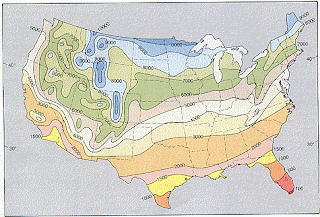HEATING DEGREE DAYS
 Written by: Bob Metcalfe
Written by: Bob Metcalfe
With the string of abnormally cold weather lately, it has me absolutely dreading my heating bill for January. I have to admit, I've been doing my best to conserve energy and live a few degrees cooler in my house, even trying out space heaters, but boy I heard the heat running a lot this week!
I'm here to tell you this: there is a way that you can "forecast" what to expect from your bills, in a way. You may have heard the term "heating degree days", or "cooling degree days". These are a simple calculation of weather or not a month is colder/warmer than normal, in a sense.
To calculate heating degree days, all you need is the day's high and low temperature. We'll use the coldest day so far, from January 16 for an example.
First, you take the average of the high and low for the day. So our high was 10, low was two. 12 divided by 2 gives you 6.
Now you take that average (6 in this case) and subtract it from 65, which is the reference point for HDD and CDD. Any average temperature below 65 will give you a heating degree day. This is considered "room temperature" so to speak.
So 65-6= 59 heating degree days for January 16th. Now let's compare that to what it would look like with historic average temperatures:
The average is 31/16. So 47 divided by two gives you roughly 24 (we'll round up). 65-24 means that the average HDD we would have for January 16 would be 21. So we almost TRIPLED the heat we would use if the weather was "normal". Intense huh?!
For the month so far, we've used 784 heating degree days, which is 101 HDD above normal. That's like running your heat for an extra 5 days, and we're only halfway through the month. I'm DREADING this bill!
(Picture above shows the average HDD across the United States. We fall between 7000 and 8000 per year)
No comments:
Post a Comment